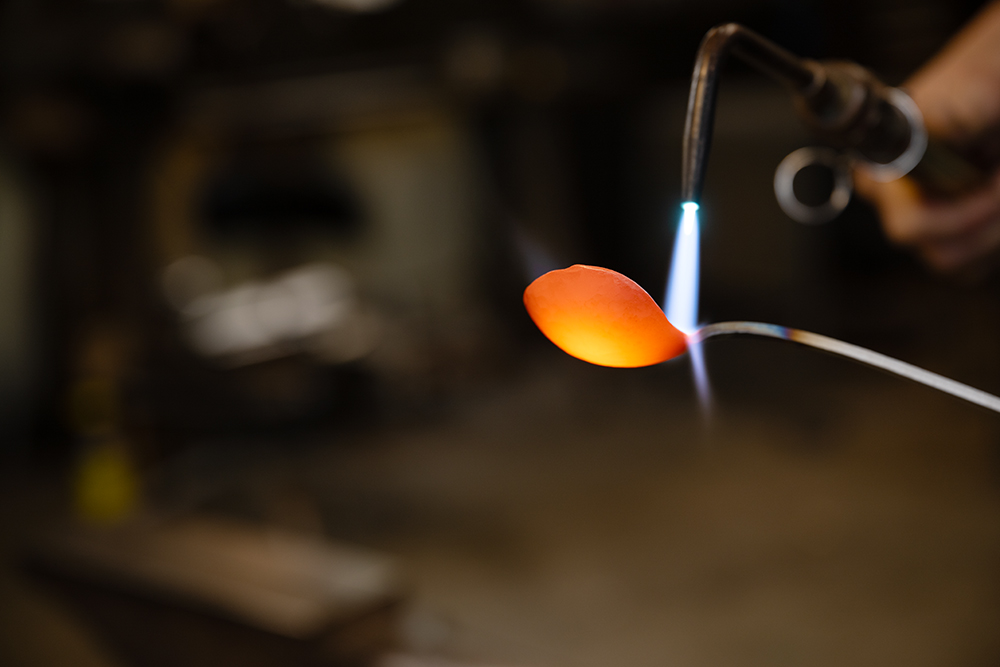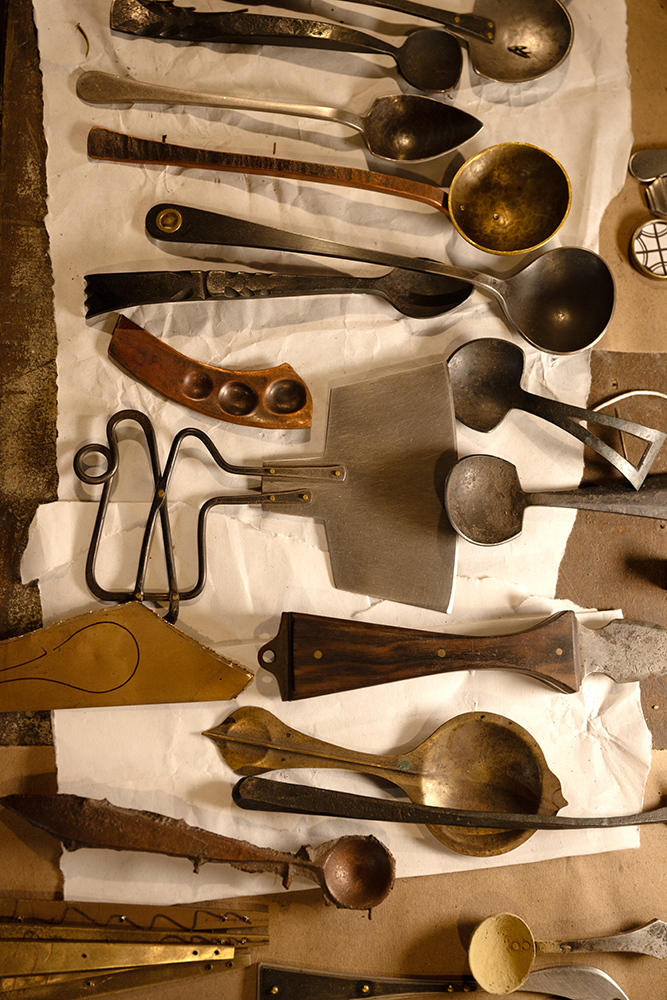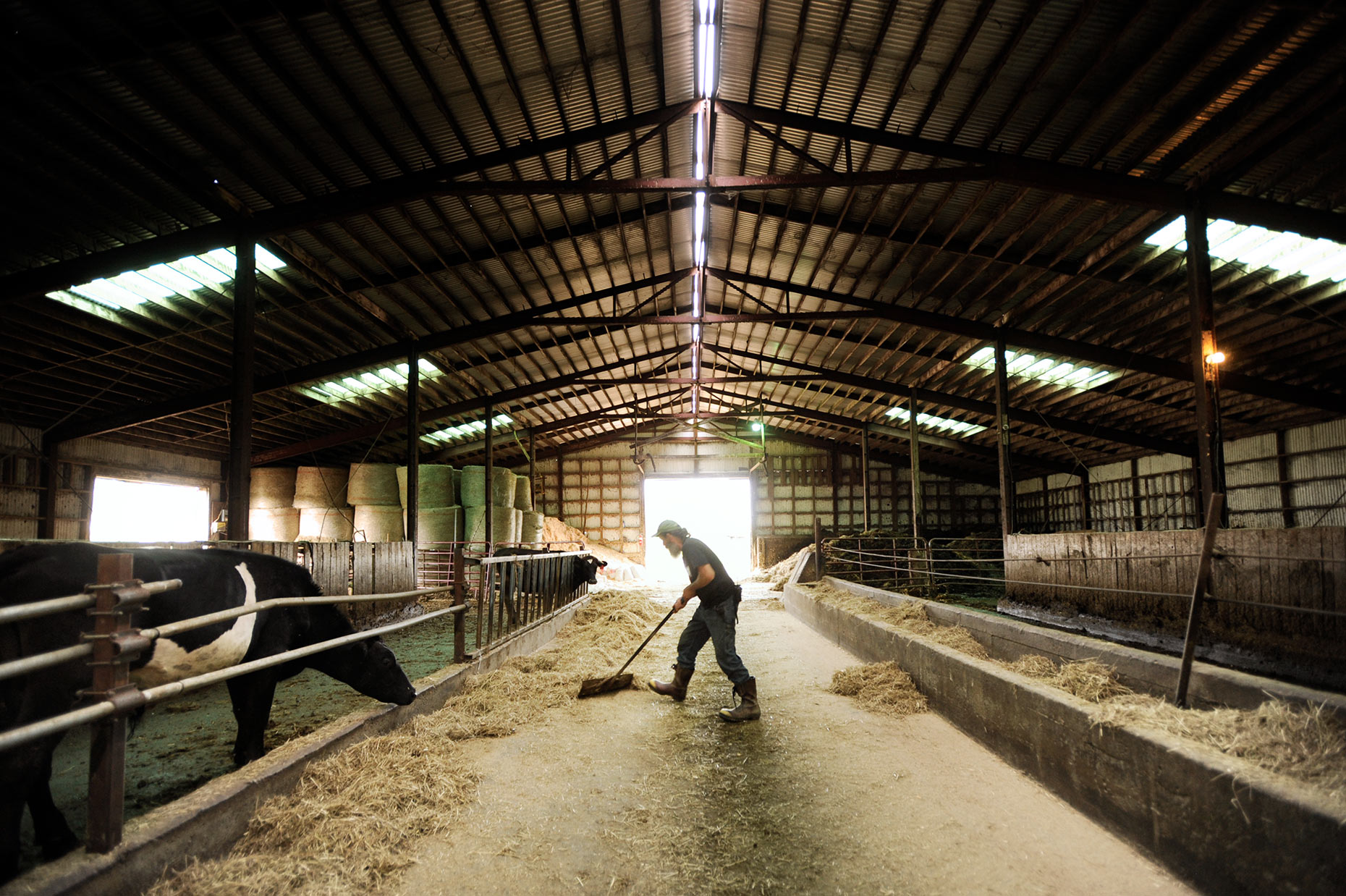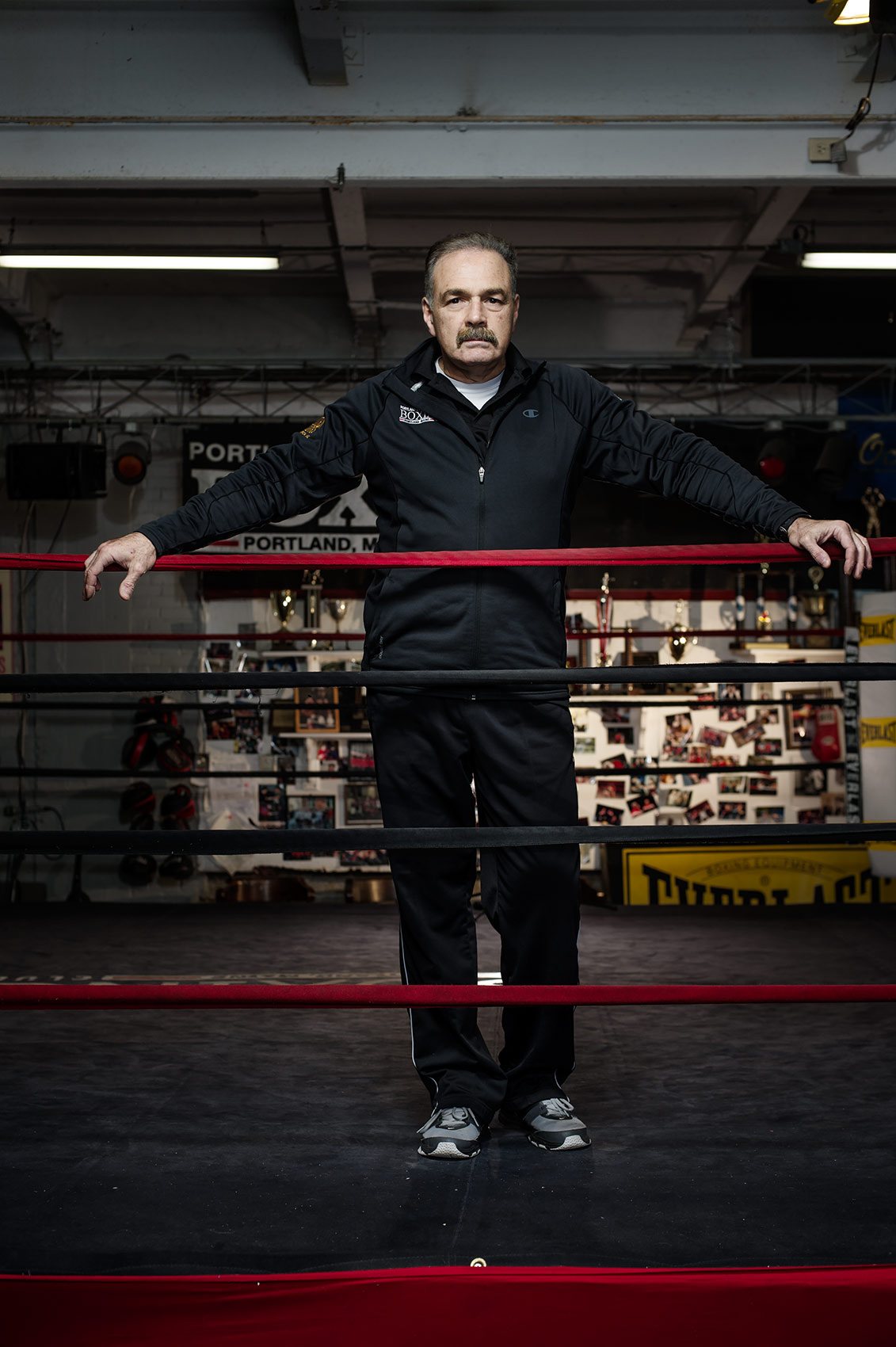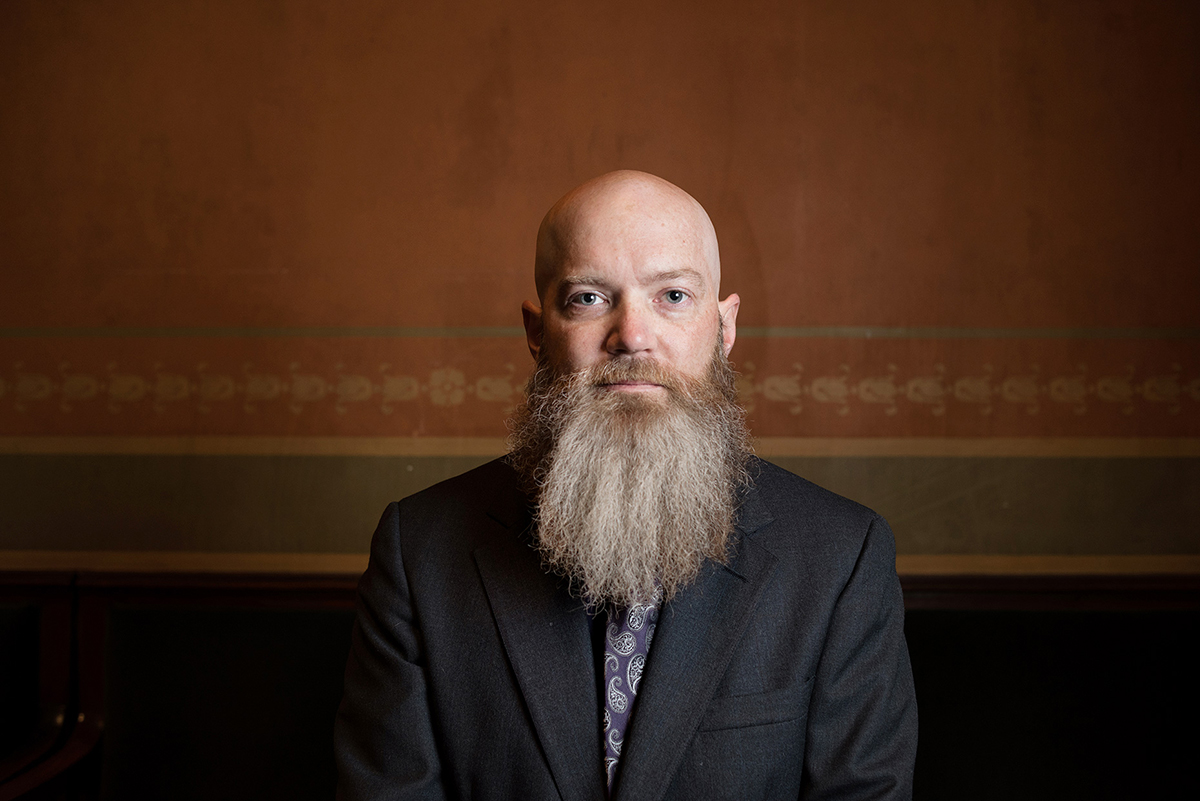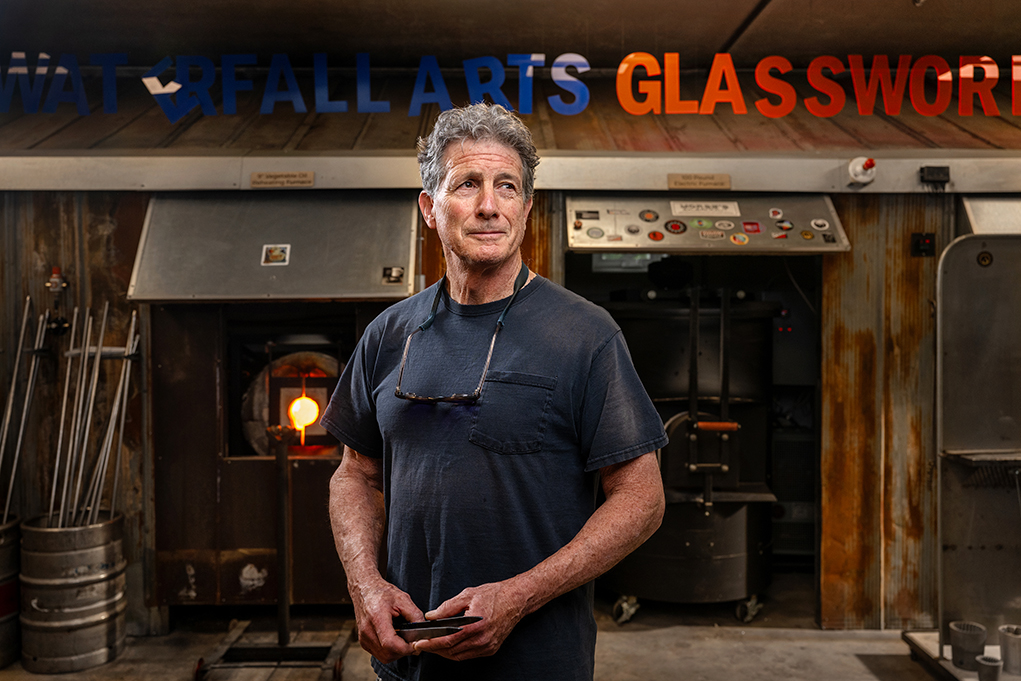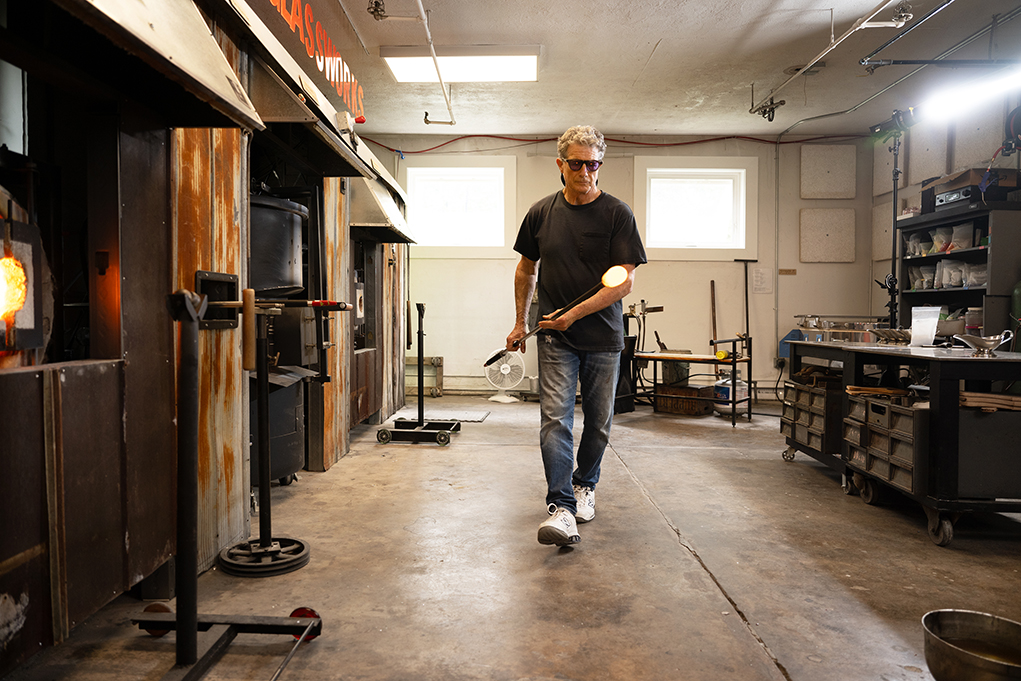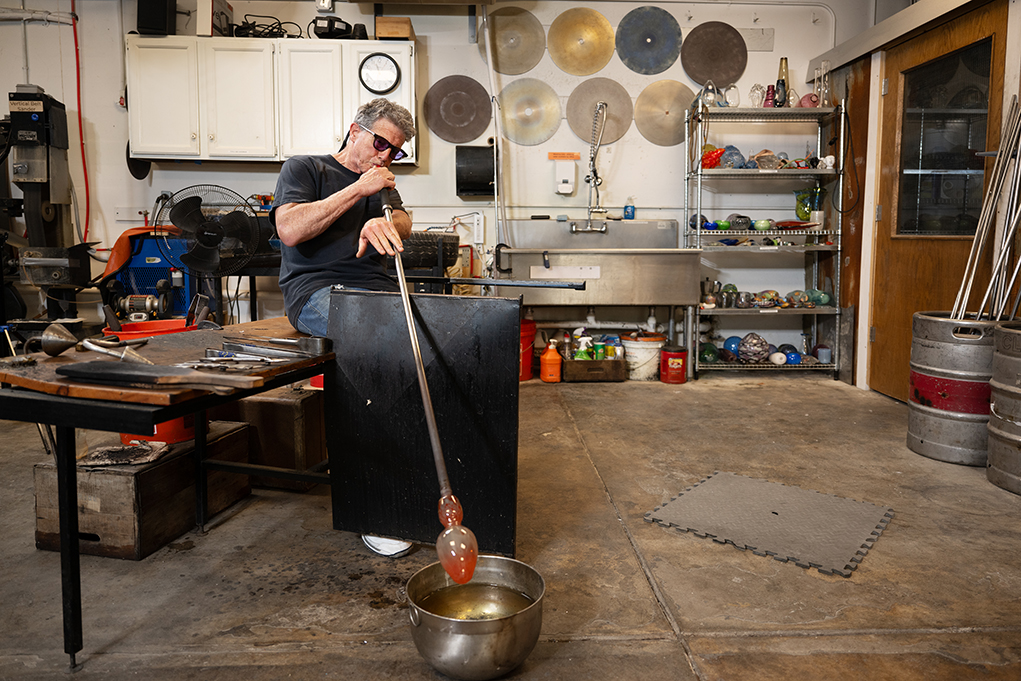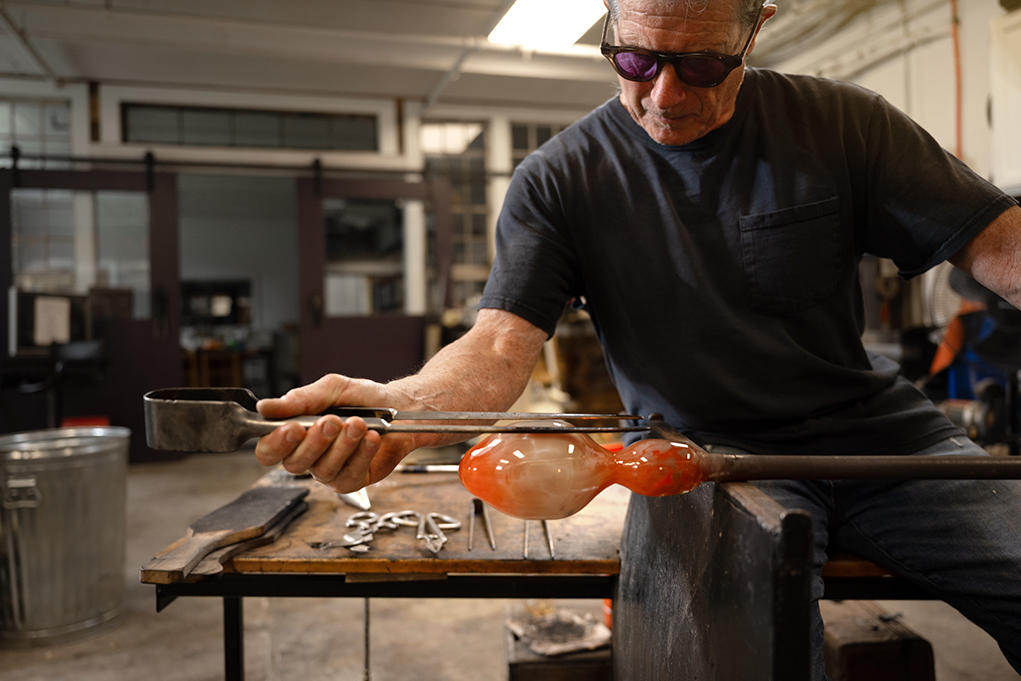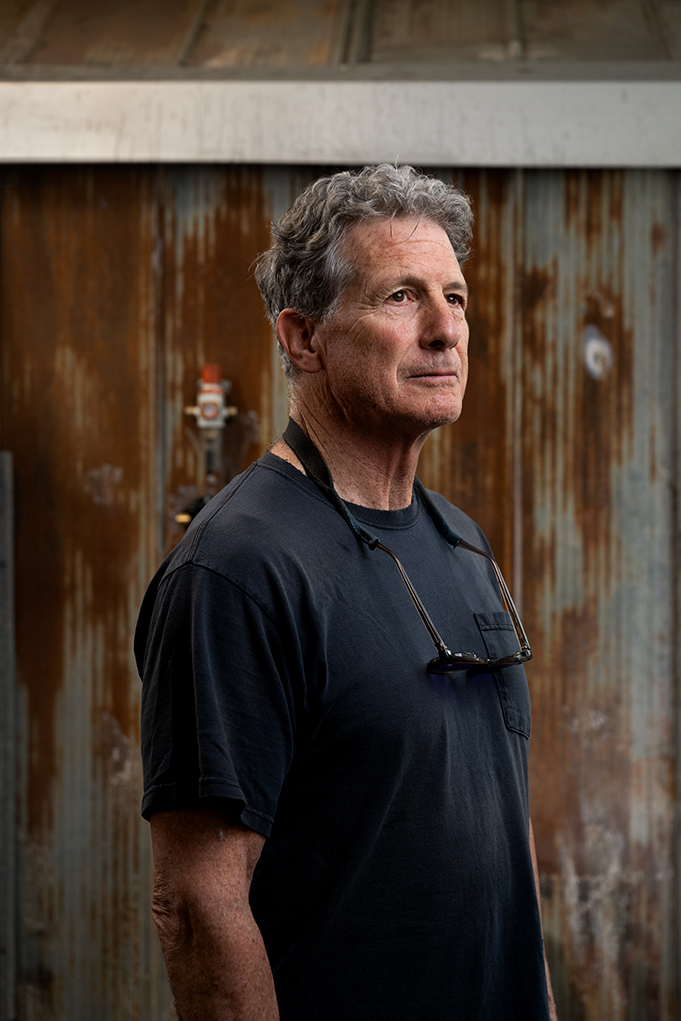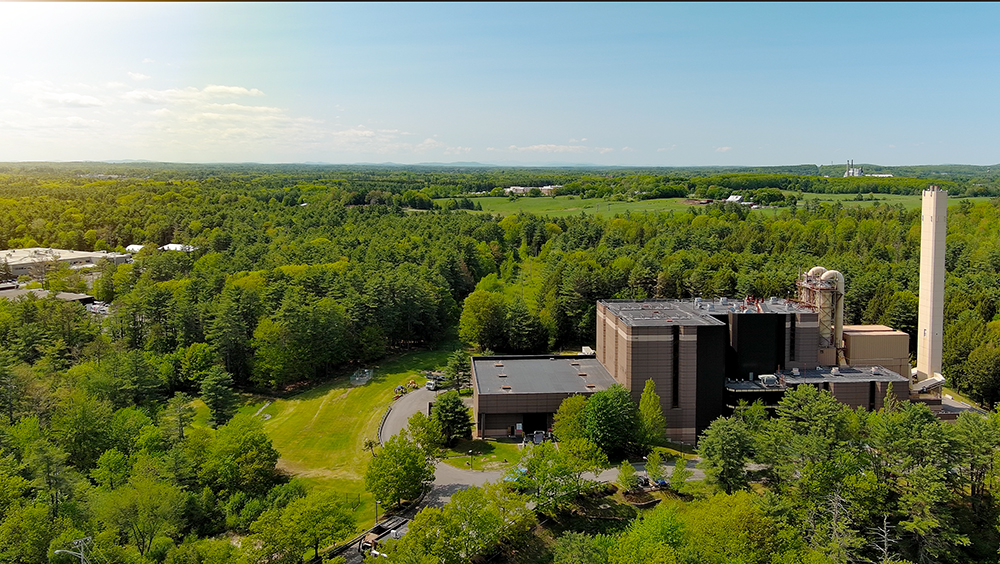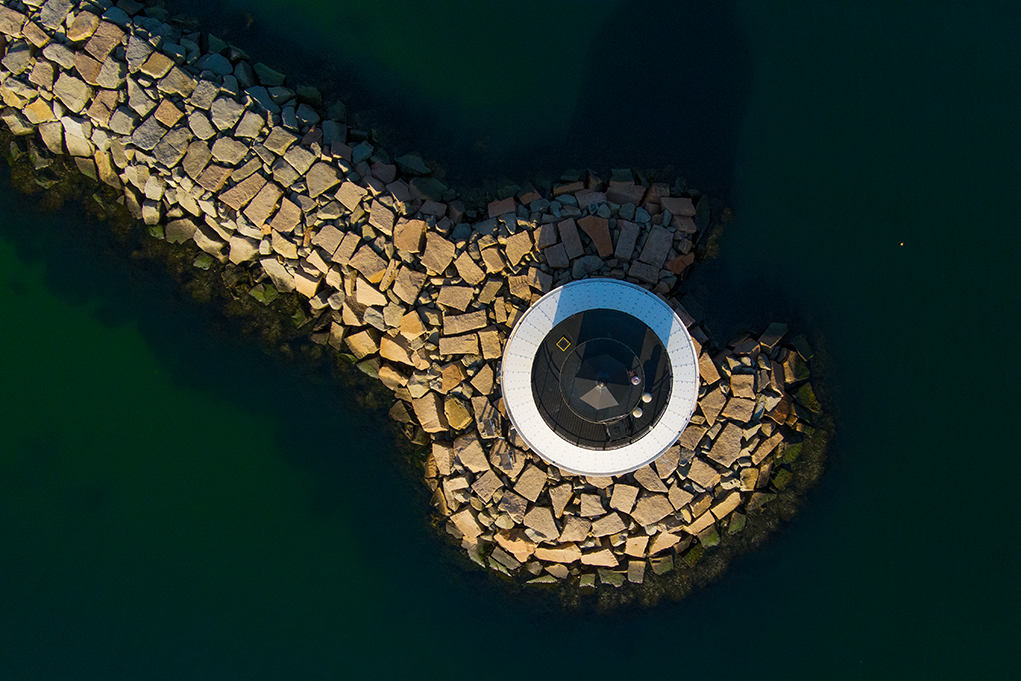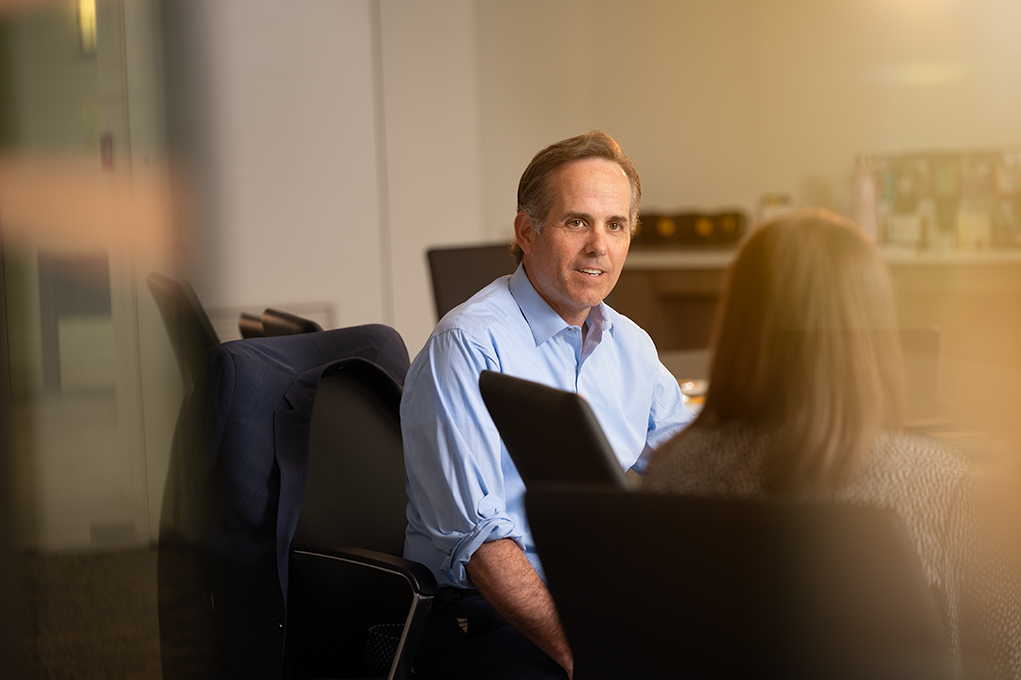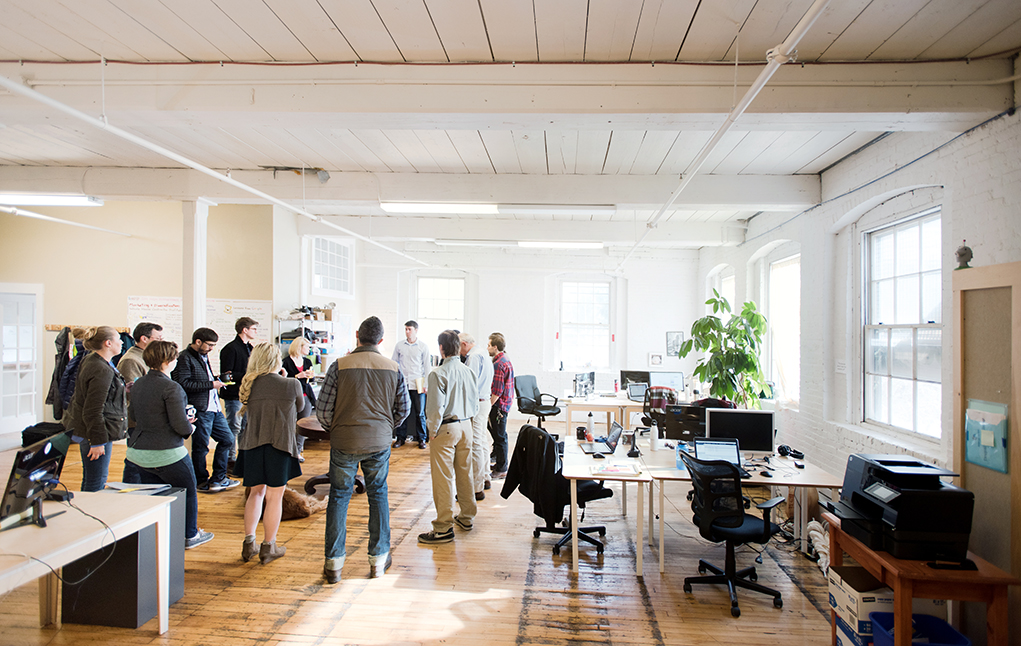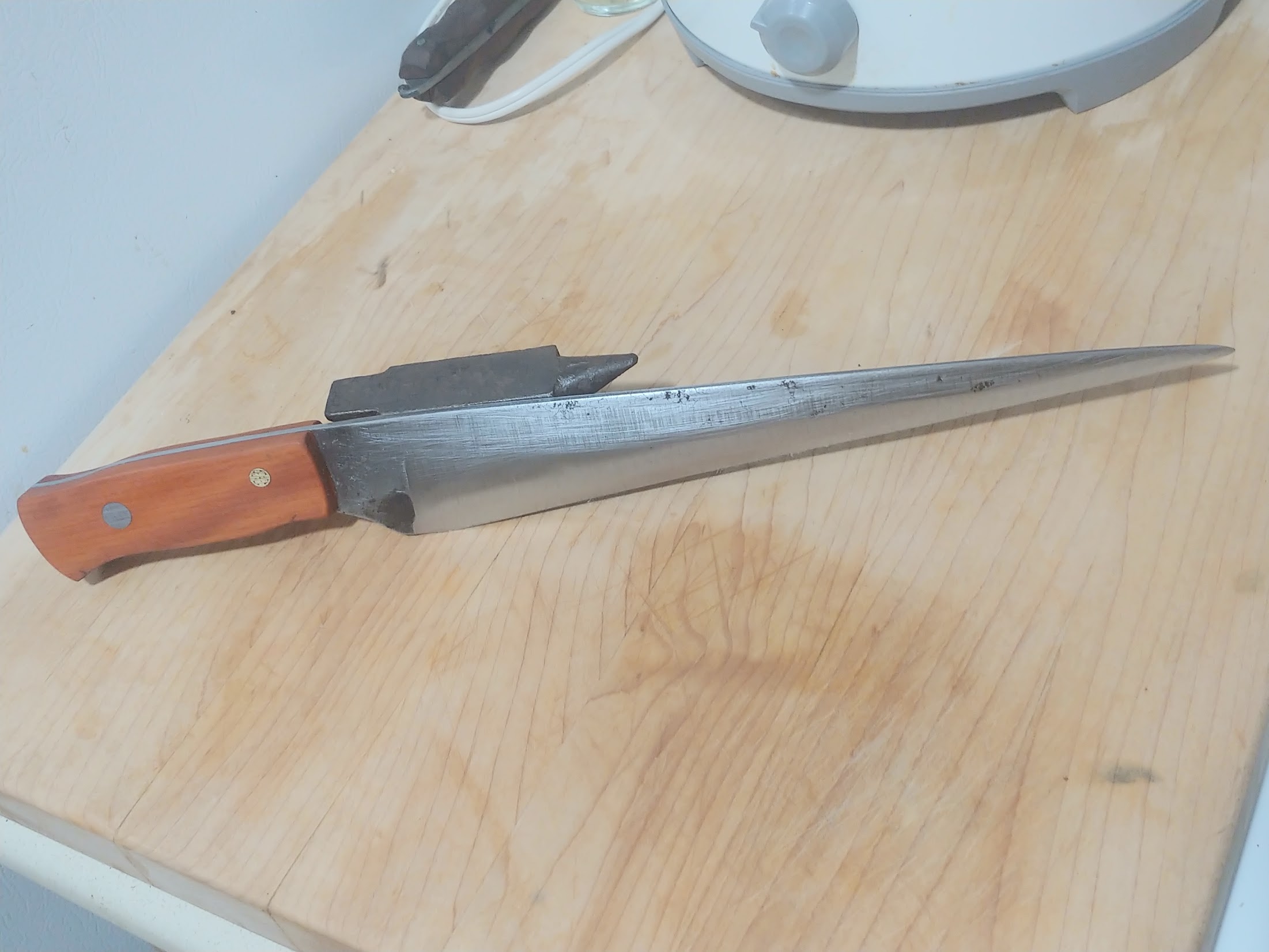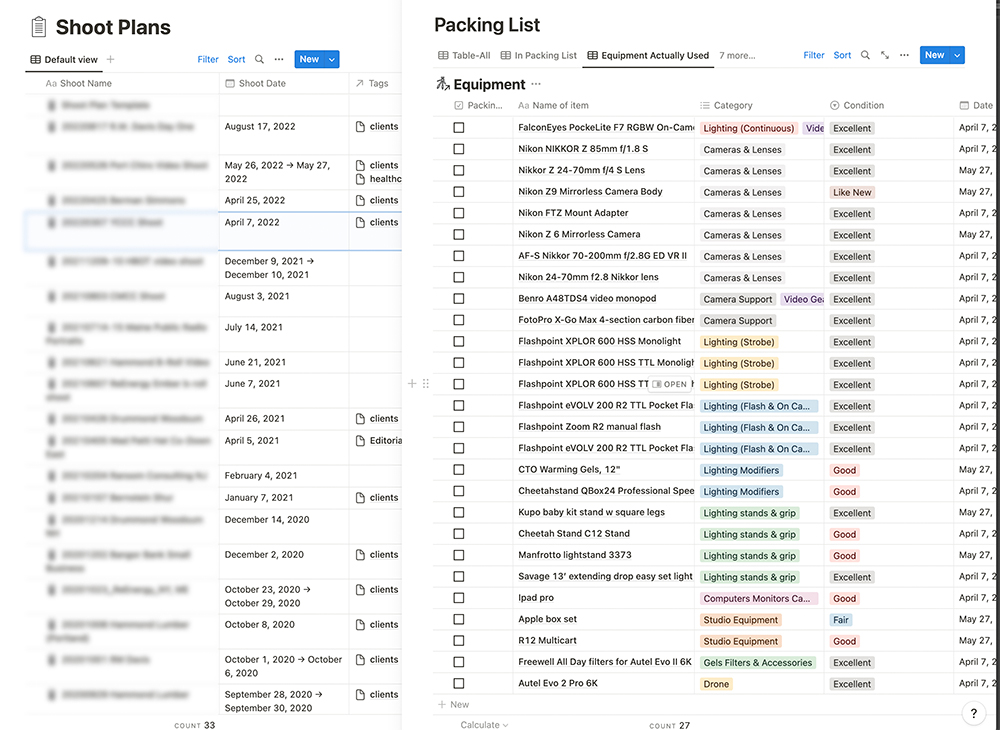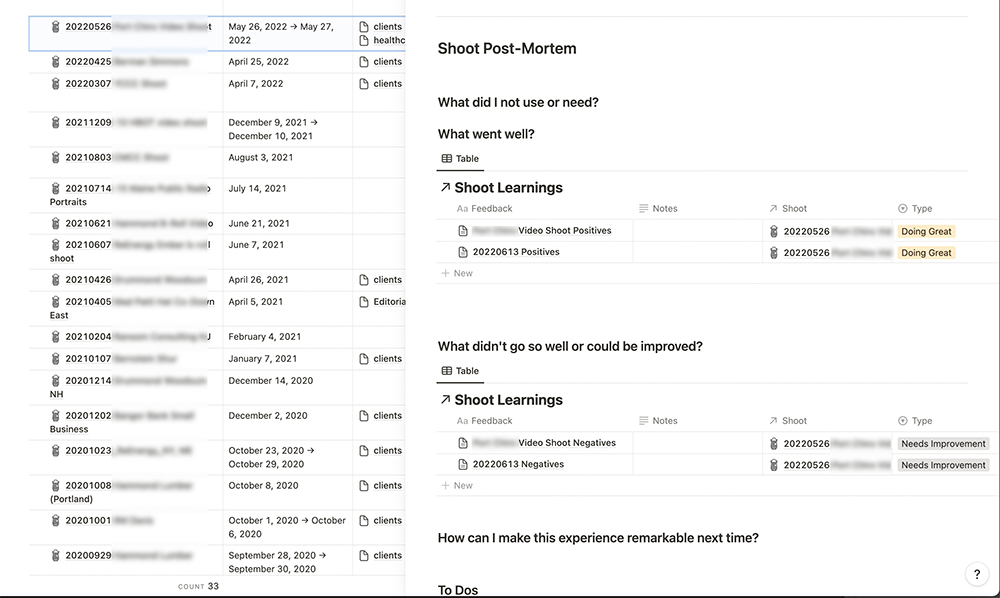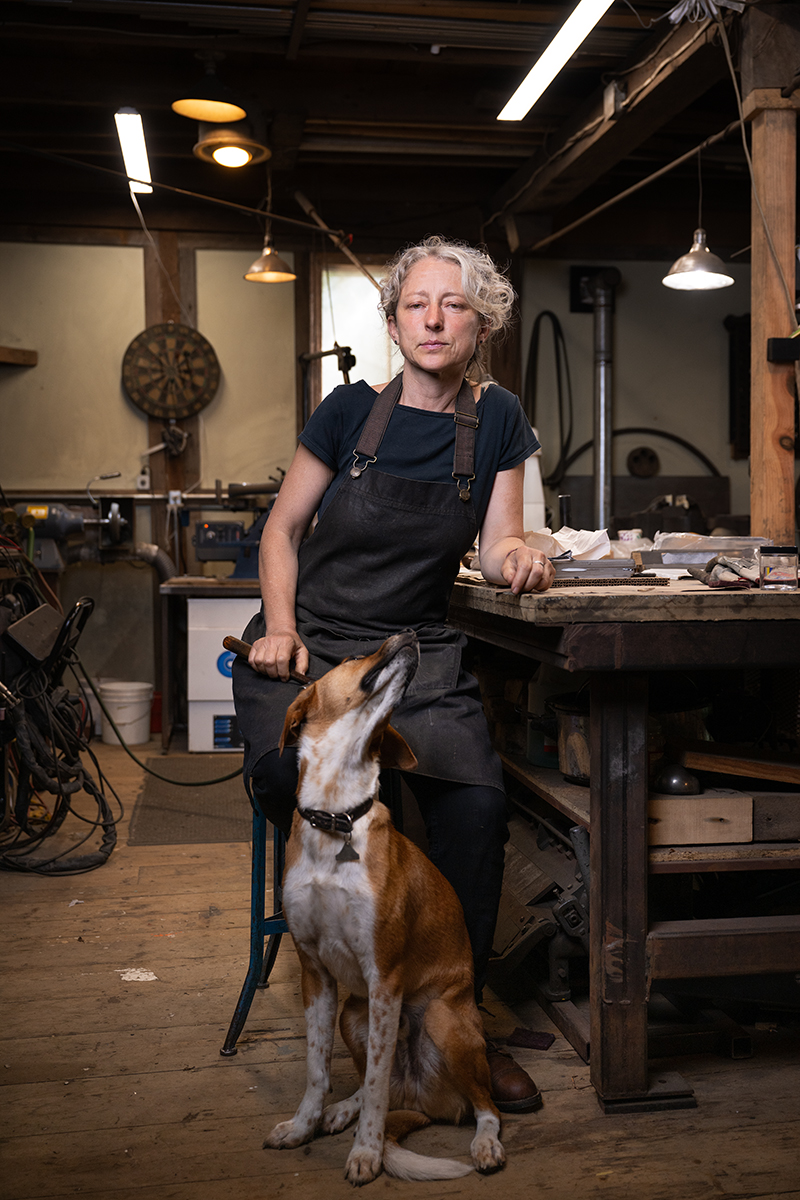
Erica Moody, a metal fabricator and artist, sits in the late-1800s barn that now serves as her workshop in Waldoboro, Maine.
Moody has been working with metal for more than three decades. After years working in Boston, she chose to move to Maine to forge a simpler life—and the handcrafted serving utensils she is increasingly known for. Moody uses traditional metal crafting methods to make spoons, knives and other wares from copper, brass and steel. Her work has been featured in local and national publications, such as Bon Appétit and Saveur.
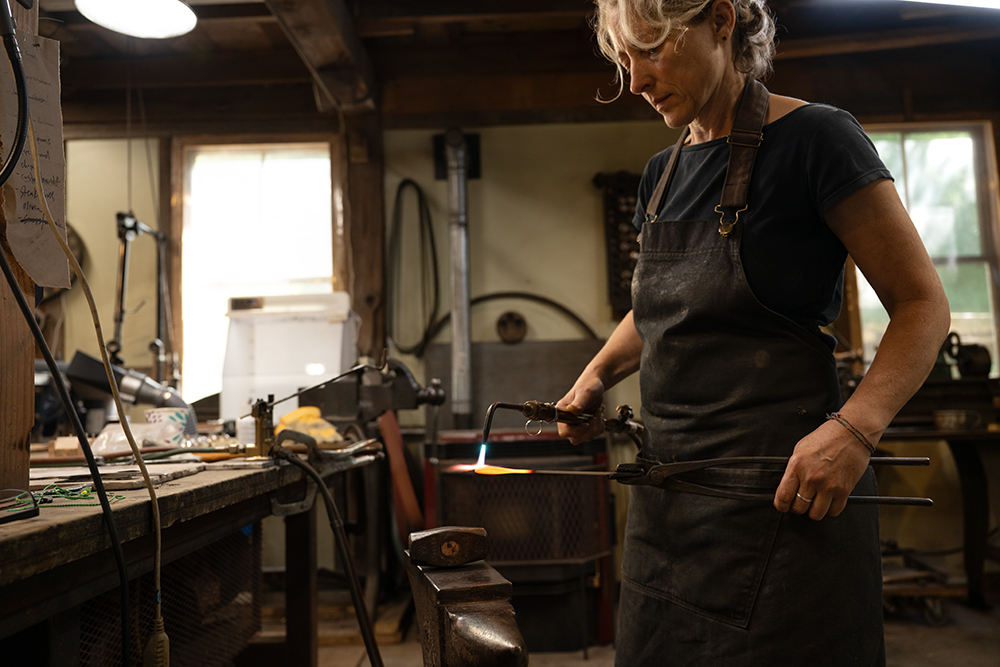
After years of working with large pieces of metal, her scaled-down workshop—filled with vintage machining tools—is the perfect place to create her one-of-a-kind spoons, coffee scoops, and knives. It’s also attached to her home, built in 1854. “To be close to home, to be able to work right here is everything. It’s why I moved to Maine,” she says.
Creating Spaces is a project that explores the connection between Maine artists and craftsmen and their physical workspaces-—places that are often hallowed grounds of creativity and solitude, far from the public eye or the gallery.
